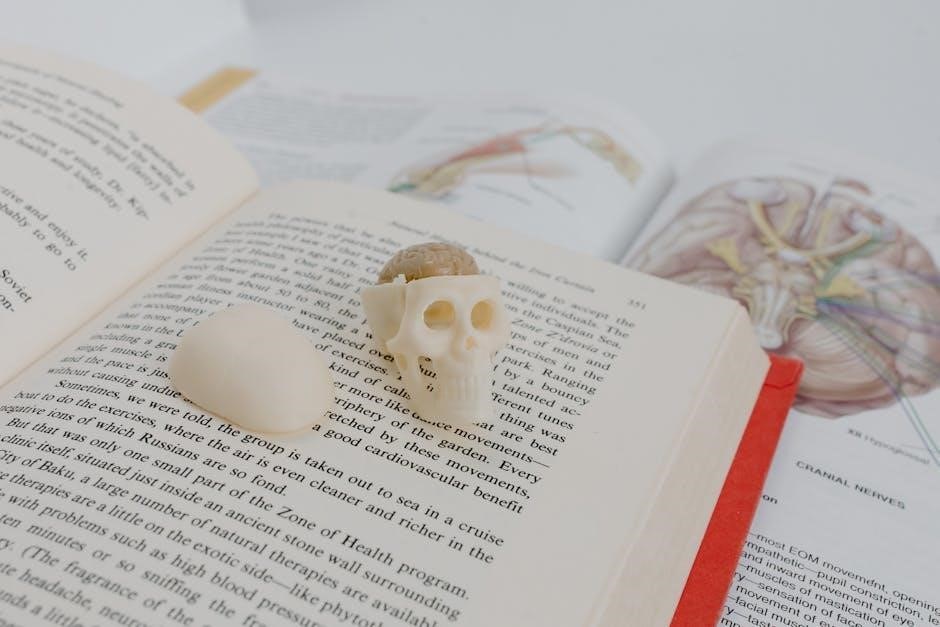This Southern vampire thriller, set in the 1990s, combines humor and horror as a women’s book club battles a mysterious vampire threatening their small town.
1.1 Overview of the Book
The Southern Book Clubs Guide to Slaying Vampires is a horror-comedy novel by Grady Hendrix, blending Southern charm with vampire lore. Set in the 1990s, it follows Patricia Campbell, a suburban housewife, and her book club as they confront a mysterious, bloodthirsty stranger; The novel mixes humor, heartwarming female friendships, and dark themes, offering a fresh take on vampire fiction. Its engaging storytelling and relatable characters have made it a standout in modern horror literature.
1.2 Author Background: Grady Hendrix
Grady Hendrix is an American author known for blending humor with horror. Born in South Carolina, Hendrix brings Southern Gothic elements to his work. His novel Horrorstör gained critical acclaim, establishing him as a unique voice in the genre. Hendrix’s writing often explores themes of suburban life, female empowerment, and the supernatural, making The Southern Book Clubs Guide to Slaying Vampires a quintessential representation of his style, combining witty dialogue with dark, suspenseful storytelling.
1.3 Genre and Setting
The Southern Book Clubs Guide to Slaying Vampires seamlessly blends horror, comedy, and Southern Gothic elements, creating a unique reading experience. Set in a small South Carolina town during the 1990s, the novel captures the essence of suburban life, emphasizing the tight-knit community and its quirks. The setting plays a crucial role in shaping the story’s atmosphere, offering a mix of relatable small-town dynamics and eerie supernatural occurrences that keep readers engaged and invested in the unfolding drama.

Plot Summary
The Southern Book Clubs Guide to Slaying Vampires follows Patricia Campbell, a suburban housewife, as she uncovers a mysterious vampire threatening her small Southern town in the 1990s.
2.1 The Storyline
The story unfolds in a small Southern town during the 1990s, where Patricia Campbell, a housewife, discovers a mysterious stranger whose arrival coincides with eerie events; As the town faces unexplained disappearances and bizarre occurrences, Patricia and her book club must confront the possibility of a vampire in their midst. Blending humor with horror, the narrative explores themes of suburban life, female camaraderie, and the supernatural, creating a gripping tale of suspense and transformation.
2.2 Main Character: Patricia Campbell
Patricia Campbell, a suburban housewife, feels stifled by her mundane life. Once a nurse, she sacrificed her career for marriage and motherhood. Her world is shaken when a mysterious stranger arrives, leading her to uncover dark secrets. Patricia’s journey from domesticity to vampire slayer highlights her resilience and determination, making her a compelling protagonist in this blend of horror and Southern charm. Her character embodies the struggle between societal expectations and personal empowerment.
2.3 The Vampire Element
The vampire element in the novel is both terrifying and intriguing, with the mysterious stranger embodying classic vampire lore while adding modern twists. His charisma and menace disrupt the town, forcing Patricia and her book club to confront the supernatural. The vampire’s presence escalates tension, blending horror with dark humor. This iconic creature represents a deeper evil, challenging the community’s values and forcing them to unite against a monstrous threat that goes beyond mere blood-sucking.
Themes and Symbolism
The novel explores themes of motherhood, suburban life, and female friendship, with the vampire symbolizing deeper societal issues and the strength of unity against darkness.
3.1 Motherhood and Suburban Life
Motherhood and suburban life are central themes, with Patricia Campbell navigating the challenges of domesticity and societal expectations. The novel portrays the struggles of women in seemingly idyllic communities, highlighting the tension between personal aspirations and family responsibilities. Through Patricia’s journey, Hendrix critiques the limitations placed on women in suburban settings, revealing the hidden strength and resilience required to manage both home and the supernatural threats that invade their quiet lives.
3.2 The Power of Female Friendship
The novel highlights the transformative power of female friendship, as Patricia and her book club unite to confront the supernatural threat. What begins as a casual gathering evolves into a strong support system, showcasing how women empower each other in times of crisis. Through their shared struggles, Hendrix emphasizes the bonds of trust and solidarity, proving that female camaraderie can overcome even the darkest challenges, both human and supernatural, in their small Southern town.
3.4 The Book Club as a Symbol
The book club serves as a powerful symbol of community and resilience. What begins as a simple gathering for literary discussion transforms into a force against darkness, representing the strength found in unity. Through their shared purpose, the women challenge societal norms and confront evil, symbolizing the transformative power of collective action. The club embodies the idea that even the most mundane rituals can become a source of courage and change in the face of extraordinary threats.

Reviews and Reception
The book has received strong reviews, with a 4/5-star rating on Goodreads. Readers praise its blend of horror and Southern humor, though some find it brutally intense.
4.1 Critical Acclaim
Critics have praised The Southern Book Clubs Guide to Slaying Vampires for its unique blend of humor and horror. Reviewers highlight Hendrix’s ability to craft a compelling narrative that balances lighthearted moments with dark, suspenseful elements. The book’s exploration of themes such as motherhood and female friendship has been particularly commended. Many have noted its fresh take on vampire lore, making it a standout in the horror genre. The novel’s 90s Southern setting adds a nostalgic charm that resonates with readers.
4.2 Reader Feedback
Readers have expressed mixed yet passionate opinions about the book. Many fans of vampire fiction and Southern Gothic themes praised its engaging storyline and strong female characters. Some appreciated the blend of humor and horror, while others found certain themes too intense. The book’s ability to evoke strong emotions, whether frustration or admiration, highlights its impact on readers. Overall, it remains a popular choice for those seeking a unique take on vampire lore with a suburban twist.
4.3 Controversies and Divided Opinions
The book sparked debate due to its graphic content and exploration of dark themes, which some readers found unsettling. While admirers praised its bold storytelling, critics argued it crossed boundaries. The portrayal of suburban life and the vampire’s menace divided opinions, with some hailing it as fresh and others labeling it too brutal. Despite this, the novel’s ability to provoke discussion underscores its impactful narrative and Hendrix’s fearless writing style, making it a standout in modern horror.
Cultural and Historical Context
The novel is set in the 1990s Southern United States, blending humor and horror within a small-town atmosphere, reflecting the era’s cultural nuances and vampire folklore.
5.1 The 1990s Southern Setting
The novel is set in the late 1980s to mid-1990s in a small Southern town, evoking a nostalgic yet eerie atmosphere. The 1990s setting influences the cultural dynamics, with suburban life, traditional values, and the rise of vampire lore. The Southern context adds depth, blending humor with horror, and isolating the characters in a close-knit community. This backdrop highlights the contrast between the town’s idyllic facade and the supernatural threat, creating a unique blend of regional charm and dark suspense.
5.2 Vampire Lore and Mythology
The novel reimagines vampire lore, blending traditional mythology with modern twists. The vampire is portrayed as a revenant, a creature returned from the dead to harm the living, drawing from classic legends. Hendrix incorporates elements of isolation and psychological horror, while the Southern setting adds a unique cultural flavor. The book explores the fear and fascination with vampires, rooted in historical myths, yet presents a fresh, contemporary take on the genre, making it a compelling read for both horror and vampire fiction enthusiasts.
5.3 The Role of Humor in Horror
Humor plays a crucial role in balancing the horror elements of the novel. Hendrix uses witty dialogue and Southern charm to lighten the tense atmosphere, creating a unique blend of terror and laughter. The book club’s dynamic and their quirky interactions provide comedic relief, contrasting with the dark, vampiric threats. This blend of humor and horror makes the story engaging and relatable, appealing to fans of both genres while maintaining a suspenseful narrative.
Comparisons to Other Works
The novel blends Southern drama with vampire horror, drawing comparisons to Steel Magnolias and Dracula. Its mix of humor and horror mirrors Buffy the Vampire Slayer.
6.1 Similarities to “Steel Magnolias” and “Dracula”
The novel skillfully blends the strong female bonds of Steel Magnolias with the dark, suspenseful vampire lore of Dracula. Like Steel Magnolias, it explores Southern women’s resilience and camaraderie, while the mysterious, bloodthirsty figure echoes Dracula’s iconic vampire. This fusion creates a unique narrative that balances humor, horror, and heart, appealing to fans of both genres.
6.2 Influence of Buffy the Vampire Slayer
Like Buffy, the novel features a strong female protagonist leading a group against supernatural threats. Patricia Campbell’s determination mirrors Buffy’s, blending humor with horror. The book’s mix of action, witty dialogue, and female empowerment reflects Buffy’s legacy, offering a fresh take on vampire lore through Southern charm and suburban drama.
6.3 Hendrix’s Unique Style
Grady Hendrix’s unique style blends humor, horror, and heartfelt storytelling. His ability to merge Southern charm with vampire lore creates a fresh, engaging narrative. The novel’s tone, often described as both witty and unsettling, reflects Hendrix’s signature voice. By focusing on strong female characters and suburban drama, he crafts a story that feels deeply personal yet universally relatable, showcasing his talent for genre-blending and atmospheric storytelling.

The Book’s Impact
The book’s unique blend of horror and humor resonated widely, influencing modern vampire fiction and attracting fans of Southern Gothic storytelling with its engaging narrative style.
7.1 Popularity and Sales
The Southern Book Clubs Guide to Slaying Vampires gained significant popularity, appealing to fans of Southern Gothic and vampire lore. Its unique blend of humor and horror resonated with readers, making it a standout in modern horror fiction. The book has seen strong sales, particularly among fans of Grady Hendrix’s previous works, and holds a 4-star rating on Goodreads, solidifying its place as a favorite among horror and suspense enthusiasts.
7.2 Influence on Modern Vampire Fiction
Hendrix’s novel has left a mark on modern vampire fiction by blending traditional lore with Southern charm and suburban drama. Its fresh take on the genre has inspired authors to experiment with regional storytelling and humor in horror. The book’s success has also sparked renewed interest in vampire narratives, proving the undead remain timeless and versatile in contemporary literature, appealing to both horror enthusiasts and fans of witty, character-driven stories.
7.3 Reader Recommendations
Readers who enjoy a blend of humor, horror, and strong female leads will find this book captivating. Fans of Stephen King and vampire lore will appreciate its unique twist. While some find it brutal, others praise its engaging storytelling. Ideal for those who like dark humor and suburban dramas, it’s a great introduction to Hendrix’s style. Recommended for murderinos and anyone seeking a fresh take on the vampire genre with a Southern charm.
A captivating blend of horror and humor, this novel shines with strong female leads and Southern charm, making it a must-read for fans of dark, witty storytelling.
8.1 Final Thoughts on the Book
The Southern Book Clubs Guide to Slaying Vampires is a unique blend of horror and Southern humor, offering a fresh take on vampire lore. With its strong female protagonist, Patricia Campbell, and a cast of relatable characters, the novel explores themes of motherhood, friendship, and community. The book’s ability to balance dark, intense moments with witty dialogue makes it a standout in the horror genre. Fans of Buffy the Vampire Slayer and Stephen King will appreciate its mix of suspense and charm, while readers seeking a compelling story about female resilience will find it deeply satisfying. Overall, it’s a gripping and memorable read that lingers long after the final page.
8.2 Recommendations for Future Reads
Readers who enjoyed The Southern Book Clubs Guide to Slaying Vampires may appreciate works blending horror, humor, and strong female leads. Charlaine Harris’s Sookie Stackhouse series offers similar Southern charm and supernatural intrigue. For fans of dark humor, Horrorstör by Grady Hendrix is another gripping option. Those drawn to vampire lore might enjoy The Passage by Justin Cronin or The Strain by Guillermo del Toro. These books share a mix of suspense, wit, and compelling characters that made The Southern Book Clubs Guide memorable.
